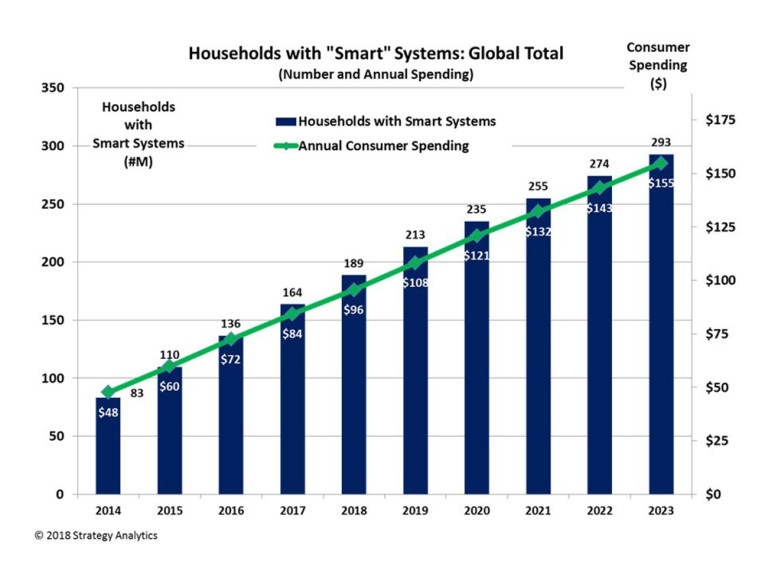 Tell me, dear reader, what’s your opinion on the following?
Tell me, dear reader, what’s your opinion on the following?
- Have smartphones killed the art of conversation?
- Watching television will give you square eyes
- A room without books is like a body without a soul.
…are you sitting there, harrumphing away, muttering things along the lines of..” the kids today, pah!” Or are you like me typing away at your keyboard thinking – these are about as accurate as Bill Gates (allegedly) saying that “640K ought to be enough [memory] for anybody” or William Orton, president of the Western Union Telegraph Company saying in 1876 “What use could this company make of an electrical toy?” when offered the patent for the telephone.
I’ve written before about my love for technology – when it works – and equally I’m not a creationist! The world is a constantly changing place – climate (yes Donald, it is!), culture, technology, language – as they say the only constant is change! I love that. Everyday there’s something new to discover, something new to experience, to learn and to enjoy. To me these 3 sentences are all about sticking your head in the sand, like and Emu, and living in the past, a rosy coloured past where everything was wonderful and live was just…better.
Bollocks, it wasn’t better – it was different.
 The first sentence is one of the most popular statements you see/hear from older people about how the children of today spent their lives in a digital world, not communicating with each other.
The first sentence is one of the most popular statements you see/hear from older people about how the children of today spent their lives in a digital world, not communicating with each other.
Wrong!! Today’s youth communicate far more and with far more people that has previously been possible.
OK, I know that not all of it is good but to say they aren’t communicating is just silly – they’re just communicating in different ways than their parents did, and their grandparents before them!
 The second sentence, or fallacy, to give it a more useful name has been around for years – well since the television (for my younger readers that’s the big screen in the living room that you stream Netflix on) became popular and widely available in the 1960’s.
The second sentence, or fallacy, to give it a more useful name has been around for years – well since the television (for my younger readers that’s the big screen in the living room that you stream Netflix on) became popular and widely available in the 1960’s.
This paragraph, from “Clare” writing on the Smallpiece Trusts website, sums the situation perfectly.
This was one of the usual threats used by mother when I was a child. I never believed her, really, but I did sit a little further back from the screen every time she said it. Then when I became a mother, I decided that my daughter would never watch television. She’d only eat organic green food (while sitting nicely at the table, obvs), never ever lay eyes on a tablet and never see a mobile phone. Judging by the way my daughter chatters away into the remote control and the face she made when she first tasted broccoli (below), I can safely say I’m losing a few of these battles.
Once again we see the parent/child
 The third sentence is a quote by Marcus Tullius Cicero, who lived 106 BC – 43 BC. A Roman statesman, lawyer, scholar, and writer who vainly tried to uphold republican principles in the final civil wars that destroyed the Roman Republic. His writings include books of rhetoric, orations, philosophical and political treatises, and letters. He is remembered in modern times as the greatest Roman orator and the innovator of what became known as Ciceronian rhetoric…and in his day it was spot on.
The third sentence is a quote by Marcus Tullius Cicero, who lived 106 BC – 43 BC. A Roman statesman, lawyer, scholar, and writer who vainly tried to uphold republican principles in the final civil wars that destroyed the Roman Republic. His writings include books of rhetoric, orations, philosophical and political treatises, and letters. He is remembered in modern times as the greatest Roman orator and the innovator of what became known as Ciceronian rhetoric…and in his day it was spot on.
And even then he was ahead of his times.
In Europe (I say that even though our politicians and lunatic right are trying to make us leave…) we had to wait for a millenium before Gutenberg revolutionised printing so the masses could get access to the written word…which, interestingly is now the name of a web based foundation enabling free, online, access to thousands of books! The technology simply didn’t exist, there weren’t that many libraries around and few of the population could have actually read a book anyway.
Think about this, cuneiform writing was only developed around 3,000BC and if we take things back even further the first cave painting are thought to be only 40,000 years old or so (there are a number of places where they have been found Spain, Indonesia, and Borneo). When people first starting to use spoken language to communicate with each would have been much earlier but we, obviously, don’t have any proof of when that started!!
Suffice it so that at some point in time, way back in history (before flares were fashionable, obviously!), banging on rocks or banging rocks on something else would have been a means of communicating with other like minded individuals. To them the idea of writing might have been a real WTF moment – “how did they do that, wow, that’s really cool”, or perhaps it would have been a “don’t do that, your fingers will drop off and your wrists go all floppy” reaction.
This is really all about attitudes to new technology and the best summation of that I can think of comes from a book – yes a book that was printed and you could, like, pick it up and it had pages which you’d be told off for folding down the corner of to remember how far you’d got! – called Crossing the Chasm by Geoffrey Moore – yes children you can still buy it on Amazon, although there is a Kindle version, oh and an Audible one as well 🙂

It was all about selling new technology and it grouped people and markets into stages of technology adoption – hey even silver surfers get social media these days! The 5 types/stages of adoption are as follows – from fastest to slowest:
- Innovators – these are the people who think stuff up, who break new ground, adopt new ways of doing things. The love the technology pure and simple – even if it isn’t that practical yet.
- Early Adopters – these are the people who see what the innovators have come up with a go wow I want it. Not only that they tend to evangelise of the benefits of the change, rather than technology/process itself.
- Early Majority – this lot need to know that it works, maybe some one they know already has it and says it’s really good. They like reviews – they’re the Tripadvisor generation.
- Late Majority – this lot are only prepared to adopt something when it’s been around quite a while, it’s really easy to get it and the price has probably dropped significantly.
- Laggards (also known as Luddites) – this bunch either aren’t interested in what’s new or are actually afraid of it. A lot of the statements you read about the harm that new stuff can cause is from fear – from a lack of understanding, from ignorance.
So that’s why you get so many different attitudes to technology, and anything that’s new in fact, and phones and the way they are used is just the latest form of communication. Much of that communication is in digital form and uses social media, and if you thought that 20 million people watching a TV programme in the UK was large, check out the user bases below – data from Statista:

Taking Facebook as an example, of that total of over 2.2 billion users more than 1 billion are using their mobile phones to communicate. and well over half of all Google search is now conducted on mobile devices.
 So are young people spending too long on their phones?
So are young people spending too long on their phones?
No, the mobile device/phone is the portal to the world wide web, to knowledge, to entertainment – the communication channel of choice – just like those rocks were millenia ago.
..but you do have to wonder what comes next…will Virtual Reality still have a “social” means of communication or will people become more insular – we’ll just have to wait and see.

 Just been reading Sky’s pretty good analysis of the coronavirus data cockup…
Just been reading Sky’s pretty good analysis of the coronavirus data cockup…
 What a fantastic idea it was – to crowdfund the development of cool new tech, new gadgets and stuff that the mainstream manufacturers thought too risky. And what a shame that it has developed into a den of iniquity, of unfulfilled promises and downright lies from those running the campaigns.
What a fantastic idea it was – to crowdfund the development of cool new tech, new gadgets and stuff that the mainstream manufacturers thought too risky. And what a shame that it has developed into a den of iniquity, of unfulfilled promises and downright lies from those running the campaigns. Cynaps: Bluetooth Bone Conduction Headset in a Hat
Cynaps: Bluetooth Bone Conduction Headset in a Hat  Jolla Tablet – world’s first crowdsourced tablet
Jolla Tablet – world’s first crowdsourced tablet  Ring – Shortcut everything
Ring – Shortcut everything Exploding kittens
Exploding kittens Sowatch
Sowatch Amabrush – The 10 Second Toothbrush
Amabrush – The 10 Second Toothbrush
 Tell me, dear reader, what’s your opinion on the following?
Tell me, dear reader, what’s your opinion on the following? The first sentence is one of the most popular statements you see/hear from older people about how the children of today spent their lives in a digital world, not communicating with each other.
The first sentence is one of the most popular statements you see/hear from older people about how the children of today spent their lives in a digital world, not communicating with each other. The second sentence, or fallacy, to give it a more useful name has been around for years – well since the television (for my younger readers that’s the big screen in the living room that you stream Netflix on) became popular and widely available in the 1960’s.
The second sentence, or fallacy, to give it a more useful name has been around for years – well since the television (for my younger readers that’s the big screen in the living room that you stream Netflix on) became popular and widely available in the 1960’s. The third sentence is a quote by
The third sentence is a quote by 

 So are young people spending too long on their phones?
So are young people spending too long on their phones? So, tell me, why after the development of phone design over the past 20 years that has claimed to make them so robust e.g. Gorilla Glass, ceramic backs and the like are they so bloody fragile?
So, tell me, why after the development of phone design over the past 20 years that has claimed to make them so robust e.g. Gorilla Glass, ceramic backs and the like are they so bloody fragile?

 I’m not sure if it’s because there’s tech all around us and we’ve had years and years of “plug and play” but I’d really like to understand the frustration I experience shortly after I get some new tech. I mean why does so much tech take so much effort to get it working properly? Well from research undertaken, whilst I was having my lunch, it appears that there are a range of factors/aggregation of said factors that can make human blood boil…
I’m not sure if it’s because there’s tech all around us and we’ve had years and years of “plug and play” but I’d really like to understand the frustration I experience shortly after I get some new tech. I mean why does so much tech take so much effort to get it working properly? Well from research undertaken, whilst I was having my lunch, it appears that there are a range of factors/aggregation of said factors that can make human blood boil…

 Stable connections
Stable connections Too complex
Too complex
 As the evenings are drawing in, earlier and earlier and the dawn rising later and later, the growth in cycling on our roads (mostly!) grows ever more dangerous. There’s a combination of bad behaviour from both cyclists and motorists part that can lead to accidents and when this is compounded by the advances in lighting technology, the lack of practical legislation and the result of government budget cuts – well just look out that’s what I say! Allow me to expand on this…
As the evenings are drawing in, earlier and earlier and the dawn rising later and later, the growth in cycling on our roads (mostly!) grows ever more dangerous. There’s a combination of bad behaviour from both cyclists and motorists part that can lead to accidents and when this is compounded by the advances in lighting technology, the lack of practical legislation and the result of government budget cuts – well just look out that’s what I say! Allow me to expand on this… In fact there is clear guidance as to how they should be set up – this from
In fact there is clear guidance as to how they should be set up – this from 

